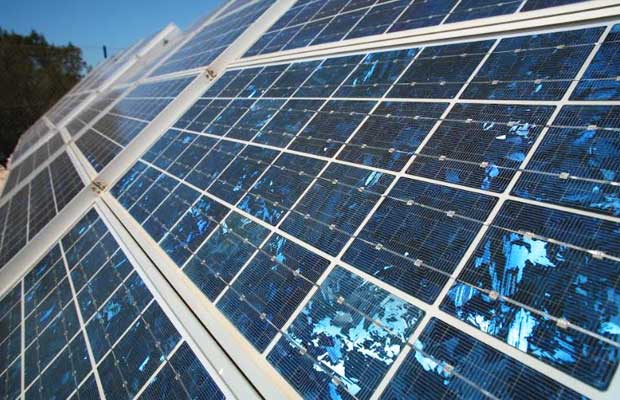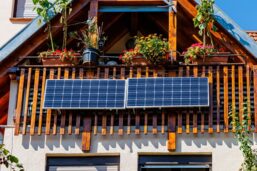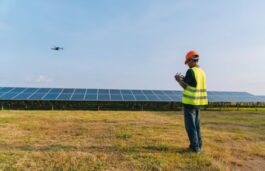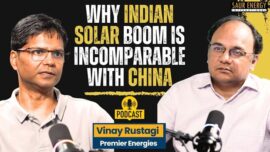Highlights :
- Up to 400 GW of nameplate solar module manufacturing capacity and nearly 325 GW of nameplate cell capacity could be online by the end of 2021, says a new report.
- Southeast Asia is the second top production location for cell and module suppliers, following China and Taiwan, which are at the top.

Up to 400 GW of nameplate solar module manufacturing capacity and nearly 325 GW of nameplate cell capacity could be online by the end of 2021, says a new report. Southeast Asia is the second top production location for cell and module suppliers, following China and Taiwan, which are at the top.
Clean Energy Associates (CEA), a leading solar and storage supply technical advisory, has released its Q2 PV Supplier Market Intelligence Program (SMIP) report for 2021, which includes insights gathered from interviews and analysis of many of the industry’s leading solar supply chain manufacturers.
According to the forecasts, sizeable pipelines for new polysilicon expansions will continue to be built with over 1.2 million tons expected to be online by 2023. Although the majority of expansions (72%) are planned for outside of Xinjiang, China, the vast majority (89%) of global polysilicon production is still expected to take place within China. Non-Chinese-based polysilicon capacity is expected to exceed 130,000 tons by 2023 (11% of global capacity), with the majority located in Germany and the United States.
Most major Chinese polysilicon providers are looking at expansions exceeding 100,000 tons; only Daqo has not detailed a significant boost in new production capacity. Small expansions from incumbents such as OCI, Ordos, Youser and others are also underway, although these suppliers are eclipsed by the scale of major market players. Xinjiang Jingnuo, a new supplier, announced intentions to develop polysilicon production in Xinjiang this past quarter and will target 100,000 tons of production capacity if permits are approved by government bodies.
400 GW of Nameplate Solar Module Capacity Expected to Be Online by End of 2021
Through surveys with leading module suppliers, CEA believes that around 400 GW of total nameplate module manufacturing capacity and nearly 325 GW of nameplate cell capacity could be online by the end of 2021. China and Taiwan are expected to remain the top production locations, together accounting for over 85% of global cell manufacturing capacity and around 75% of global module manufacturing capacity. Southeast Asia is the second top production location for cell and module suppliers, holding around 9% and 13% of the global cell and module production capacities, respectively.
Despite this large production potential, wafer, cell, and module suppliers faced difficulties due to persistent shortages of polysilicon and a subsequent rise in its price. Furthermore, rising prices of steel, aluminum, and copper, along with surging freight charges further led to increased project costs, creating weak demand during the first half of 2021 for most markets. Even with these challenges, global supplies of both cells and modules are expected to expand throughout the forecast period. Large developers have already started construction on large manufacturing complexes and most maintain plans to bring new capacity online.
Strong Environmental Policies and Regulations in Conjunction With Ambitious Carbon-Neutrality Goals Makes Europe An Attractive Destination For Solar PV Cell And Module Manufacturers
Despite COVID-19 pandemic, demand for solar in the European Union region increased to 18.2 GW in 2020 from 16.2 GW in 2019. The region is revising several policies and regulations to achieve its carbon-neutrality goal by 2050 which is expected to offer strong advantages to solar and other renewable energy sources. Increasing focus on building a resilient domestic solar PV supply chain while reducing the reliance on Chinese imports is expected to attract suppliers to set up their facilities in this region.
However, Europe’s solar manufacturing ecosystem is currently limited by wafer and cell production which accounts for less than 20% of total module production. Wacker remains the sole producer of polysilicon in the region, with few ingots or wafer producers situated in Europe to buy its polysilicon outputs. The lack of cost-effective wafer and cell production is also increasing module imports from China.
With module production capacity around 25% of module demand in the European Union, most of all installed capacity in Europe can be traced back to China.
Although solar PV cell and module suppliers keep announcing new capacity expansion plans, with polysilicon suppliers still needing several quarters to bring new production online, and logistics challenges not expected to abate in 2021, solar projects in many key markets are at risk of being pushed to 2022 and module manufacturers may not reach desired shipment figures this year, says the report.





























